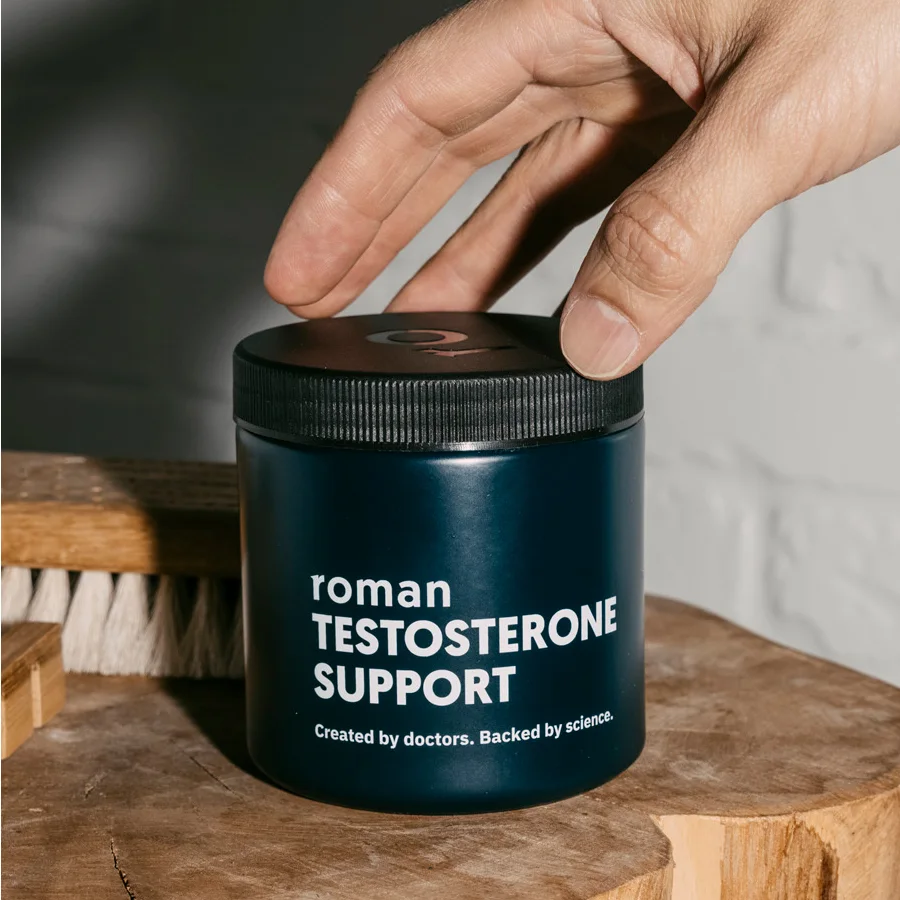Here's what we'll cover
Here's what we'll cover
Here's what we'll cover
Besides putting a damper on your sex life, low testosterone levels (“low T”) can lead to other health problems, such as heart disease, diabetes, and mental health conditions like depression. Healthcare providers often prescribe testosterone replacement therapy (TRT) to supplement a man’s natural production of this vital sex hormone.
When starting or considering a new treatment, it’s normal to have many questions. Keep reading to learn more about the benefits of testosterone replacement therapy for men, how long it takes to work, potential side effects, and what to expect during treatment. (If you’re looking for information about low testosterone in women, check out this article).
What is testosterone replacement therapy (TRT)?
If your testosterone levels are low—defined as less than 300 ng/dL on two separate blood tests— your healthcare provider may prescribe testosterone replacement therapy or “TRT” (Sizar, 2022).
The hormone testosterone plays an integral role in the human body—especially when it comes to sexual function and development in men. As men age, it’s normal for testosterone levels to go down. But, if your T levels drop too low or too early, the resulting symptoms can take a toll on your overall quality of life. Low T may also be linked to type 2 diabetes, heart disease, osteoporosis, and depression (Grech, 2014).
The symptoms of low testosterone depend on how long your T has been dropping. At first, you may feel tired, have little or no sexual desire, have difficulty concentrating, and feel depressed or irritable. After a year or more, you may notice changes in your physique, such as (Kumar, 2010):
Less hair on your face and body
Loss of muscle mass
Increased body fat
Enlarged breast tissue (“man boobs”)
Before prescribing treatment for low testosterone, your healthcare provider will check your T levels. If your T is less than 300 ng/dL on two separate early-morning tests, your healthcare provider may recommend testosterone replacement therapy (TRT) (Sizar, 2022).
Types of TRT
Several forms of TRT are available by prescription. Popular examples include (Sizar, 2022):
Transdermal—Transdermal (topical) gels, patches, or solutions, such as AndroGel and Testim are usually applied to the skin once a day.
Nasal gel—This form is available by the brand name Natesto and requires three-times-a-day dosing, which some people may find inconvenient.
Injections—These injections, such as Delatestryl and Depo-Testosterone, get injected into a muscle once a week or every two weeks. Testosterone shots can be an excellent option for people who have trouble remembering to use daily medication.
While transdermal testosterone is a popular treatment choice for low T, the rest of this article mainly focuses on testosterone injections. A healthcare provider can discuss which treatment plan might work best for you.
How long does it take for testosterone injections to work?
Testosterone injections won’t start to work overnight, and some low T symptoms take longer to improve than others. While individual results may vary, the general timeline for testosterone injections to work is between 3 weeks and 12 months. This is a pretty wide range because not all the benefits of testosterone injections go into effect simultaneously. Below are some specifics on what to expect (Saad, 2011):
Sex drive
TRT may start to help improve sex drive and sexual performance within 3–4 weeks, with maximum benefits typically plateauing at six weeks. Even though you may notice an improvement in as little as three weeks, it may take up to six months to see the full benefits of TRT on erectile dysfunction.
Energy levels
You can start to feel more energetic within 3 to 6 weeks. It may take around 18 to 30 weeks to see the full benefits of TRT on your mood.
Lipids
Lipids are fats in your blood, such as cholesterol and triglycerides. Low testosterone levels in men may lead to high cholesterol and triglycerides, which can raise your risk of severe heart problems. The good news is that improvements in your lipid levels may start within four weeks of taking TRT, with the maximum effects seen after 6–12 months.
Blood sugar and insulin sensitivity
Blood sugar levels may increase in men with low T. This may be due to insulin resistance, which occurs when your body becomes less sensitive to the sugar-lowering effects of natural insulin. Over time, this can lead to type 2 diabetes or complications of diabetes. Once your T level rises from taking TRT, your body may become more sensitive to insulin. But, you may not see an improvement on a blood test for 3–12 months.
Body composition
Changes in fat mass, lean body mass, and muscle strength, including weight gain or weight loss, can start within 12 to 16 weeks of initiating TRT. Effects on body mass usually level off at 6 to 12 months, but gradual changes may continue with longer-term use of TRT.
Red blood cells
Men with low testosterone levels may have a low red blood cell count. Taking TRT may increase your body's production of red blood cells. After using TRT for three months, an increase in red blood cells may be seen in bloodwork results, with levels peaking around 9 to 12 months into treatment.
Bone density
Men with low T may have low bone density or weakened bones, making them more susceptible to broken bones and osteoporosis. TRT can increase bone mass within six months. Bone mass may continue to improve for at least three years on TRT.
Inflammation
Men with low testosterone levels may have higher levels of inflammation in their bodies. After starting TRT, inflammation may decrease within 3 to 12 months.
Testosterone shot side effects
Common side effects of testosterone injections include (Sizar, 2022; FDA, 2018):
Pain or swelling at the injection site
Deepened voice
Headache
Nausea
Changes in mood
High red blood cell count
Increased facial or body hair
You should speak to your healthcare provider or seek medical care if you experience severe side effects, such as (Grech, 2014):
Lower leg pain, swelling, or redness
Sudden shortness of breath
Right upper abdominal pain
Yellowing of the skin or eyes
Difficulty urinating or producing less urine than usual
Chest pain
A painful erection that lasts for hours
It’s still unclear if testosterone replacement therapy affects cardiovascular disease or obstructive sleep apnea (Sizar, 2022). Tell your healthcare provider if you’ve had a heart attack, stroke, high blood pressure, or sleep apnea. They’ll determine if testosterone replacement therapy is right for you.
Testosterone replacement therapy may decrease your sperm count. If you’re trying to start a family or plan to soon, make sure to talk to your healthcare provider (Patel, 2019). They may recommend an alternative medication called clomiphene.
Also, men who have had breast cancer or prostate cancer should not use testosterone replacement therapy. This is because testosterone may fuel the growth of these cancers. You may wonder why TRT is considered a controlled substance. In 1990, Congress passed a law making anabolic steroids—including testosterone replacement therapy—controlled substances in the United States. This was in response to athletes misusing steroids to enhance performance. This “doping” involves very high doses of testosterone, more than what’s found in TRT. It also involves combined use with other drugs to boost overall performance (NIDA, 2021).
Once you start testosterone therapy, can you stop?
If testosterone replacement therapy is right for you, you’ll typically be on it long-term. After some time, you may have more energy, increase your sex drive, and feel better overall.
However, there may be reasons you want to stop TRT. Maybe you want to start a family, or you’re having side effects. Before stopping testosterone, you should talk to your healthcare provider. Testosterone is not something you should stop abruptly, but you should taper or wean off gradually to help lessen the severity of side effects. Your healthcare provider will recommend the best plan for doing this.
It’s important to note that your body will revert back to how it was before you started using testosterone replacement therapy. If you’re looking for an alternative, Clomid (clomiphene citrate) may be an option. It is sometimes used off-label to treat low testosterone in men. Clomid is an oral tablet that helps your body produce more testosterone without affecting sperm count (Patel, 2019). This makes it a potential alternative to testosterone replacement therapy if you are considering starting a family.
DISCLAIMER
If you have any medical questions or concerns, please talk to your healthcare provider. The articles on Health Guide are underpinned by peer-reviewed research and information drawn from medical societies and governmental agencies. However, they are not a substitute for professional medical advice, diagnosis, or treatment.
References
Food and Drug Administration (FDA). (2018). Depo-testosterone label. https://www.accessdata.fda.gov/drugsatfda_docs/label/2018/085635s040lbl.pdf
Grech, A., Breck, J., & Heidelbaugh, J. (2014). Adverse effects of testosterone replacement therapy: an update on the evidence and controversy. Therapeutic Advances in Drug Safety , 5 (5), 190–200. Retrieved from https://www.ncbi.nlm.nih.gov/pmc/articles/PMC4212439/
Kumar, P., Kumar, N., Thakur, D. S., Patidar, A. (2010). Male hypogonadism: Symptoms and treatment. Journal of Advanced Pharmaceutical Technology & Research , 1 (3), 297-301. doi: 10.4103/0110-5558.72420. Retrieved from https://www.ncbi.nlm.nih.gov/pmc/articles/PMC3255409/
National Institute on Drug Abuse (NIDA). (2021). What is the history of anabolic steroid use? Retrieved on Oct. 5, 2022 from https://nida.nih.gov/publications/research-reports/steroids-other-appearance-performance-enhancing-drugs-apeds/what-history-anabolic-steroid-use
Patel, A. S., Leong, J. Y., Ramos, L., & Ramasamy, R. (2019). Testosterone is a contraceptive and should not be used in men who desire fertility. The World Journal of Men's Health , 37 (1), 45–54. doi:10.5534/wjmh.180036. Retrieved from https://www.ncbi.nlm.nih.gov/pmc/articles/PMC6305868/
Saad, F., Aversa, A., Isidori, A. M., et al. (2011). Onset of effects of testosterone treatment and time span until maximum effects are achieved. European Journal of Endocrinology , 165 (5), 675–685. doi:10.1530/EJE-11-0221 Retrieved from https://www.ncbi.nlm.nih.gov/pmc/articles/PMC3188848/
Sizar, O. & Pico, J. (2022). Androgen replacement. StatPearls . Retrieved on Sept. 30, 2022 from https://www.ncbi.nlm.nih.gov/books/NBK534853/










